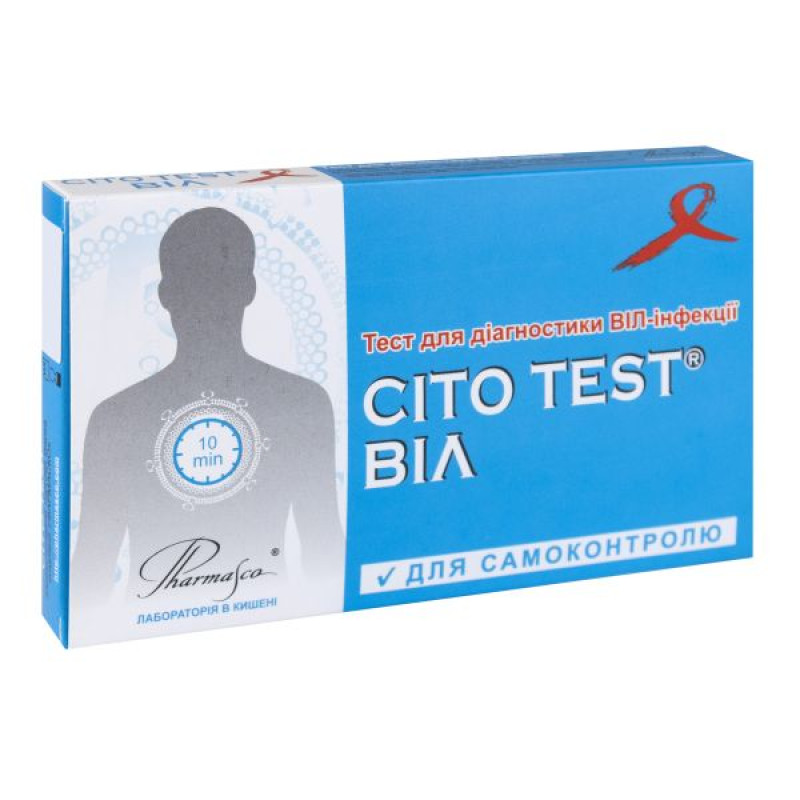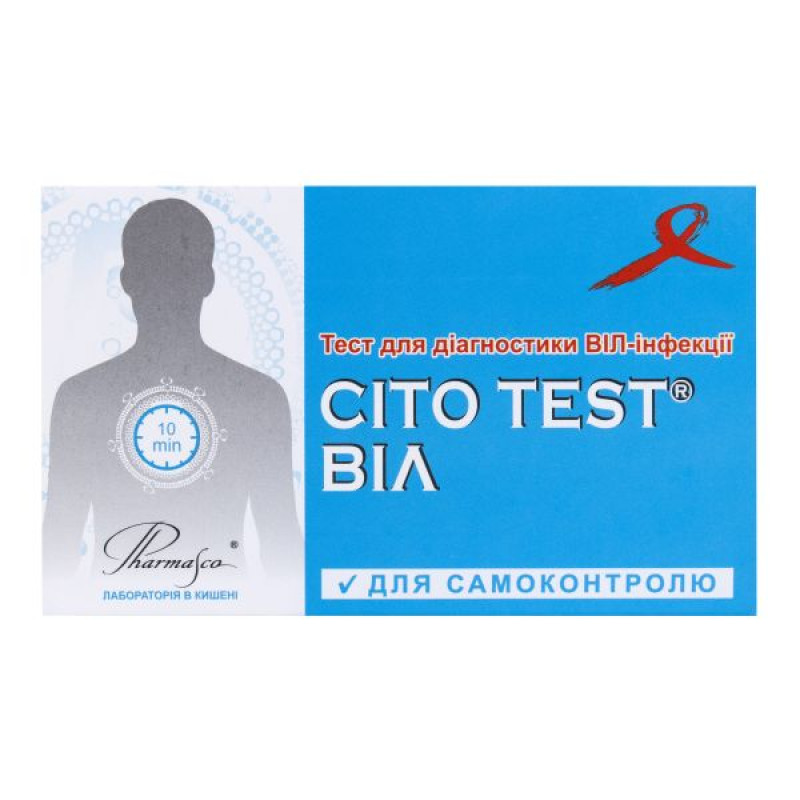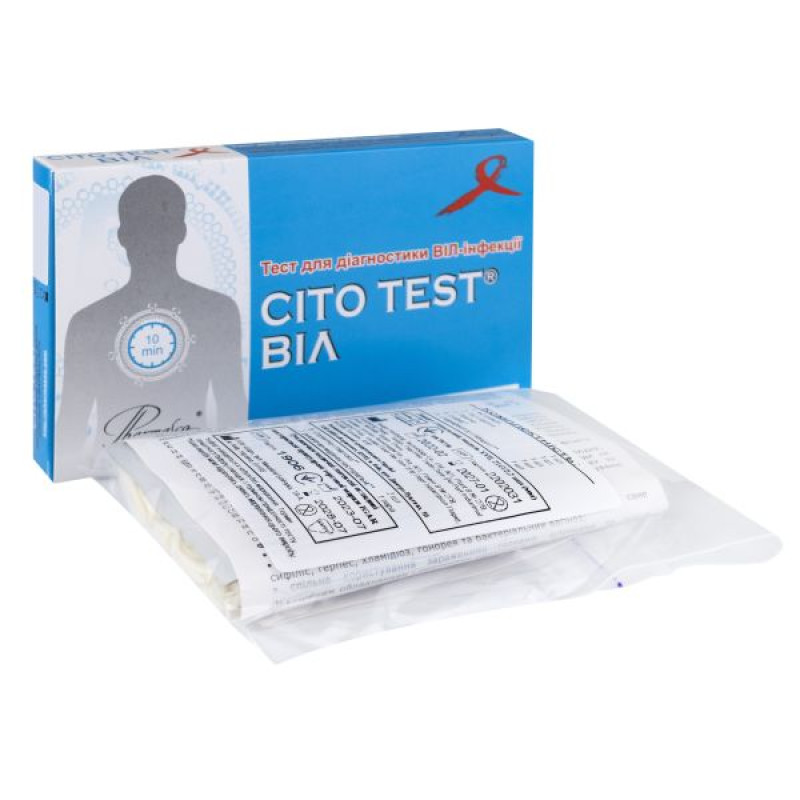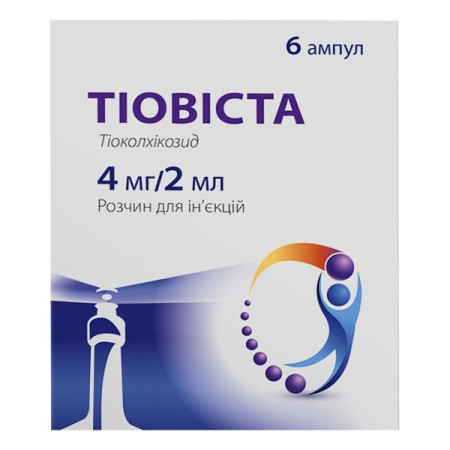Cito test hiv 1/2 test system for detecting HIV 1 and 2 types No. 1

"CITO TEST HIV 1/2" is a rapid test for the qualitative determination of total antibodies (lgG, lgM) to HIV type 1 and 2 in human whole blood, serum or plasma for the diagnosis of HIV infection.
Features
The HIV 1/2 antibody detection test system works on the principle of immunochromatographic analysis with visualization of the test results. At the injection site on the test membrane, the blood sample reacts with a colored conjugate. Antibodies to HIV type 1 and 2 present in the blood sample bind to the conjugate, forming an immune complex. The latter, due to the action of capillary sippers, moves along the membrane and reacts with immobilized recombinant HIV type 1 and 2 antigens, which were previously applied to the test zone of the membrane (T), resulting in the formation of a red line. The presence of a red line in the test zone (T) indicates a positive result, while its absence indicates a negative test result. The red line, which always appears in the test zone (C), is a procedure control, indicating that a sufficient amount of sample has been used and that the membrane capillaries are filled. The sensitivity and specificity of CITO TEST HIV 1/2 were established according to in-house standards and in clinical studies. The intra-assay precision was determined on serum samples from the company standard in 3 replicates. All samples containing antibodies to HIV type 1 and 2 were determined by the test system as positive in all replicates. The inter-assay precision was determined by three independent tests using serum samples from the company standard. All samples containing antibodies to HIV type 1 and 2 were determined by the test systems as positive. Cross-reactivity was determined on standard serum samples from the company containing HBsAg, antibodies to hepatitis C virus, Treponema pollidum antibodies, Chlamydia trachomatis antibodies. No cross-reactivity to the above substances was detected.Set
test cassette instructions pipette bufferInstructions for use
Sampling and sample preparation
The material for the study can be whole blood (from a vein or finger), serum, or plasma.
To collect capillary blood from a finger, you need:
wash the patient's hands with warm soapy water or wipe dry with a cotton swab dipped in alcohol; stretch the middle or ring finger from the wrist to the fingertips, without touching the puncture site; pierce the skin with a sterile disposable lancet, wipe off the first drop of blood; massage the finger to obtain a sufficient number of drops of blood; collect 25 μl of blood with a disposable plastic pipette, avoiding the formation of air bubbles, aspirate the entire volume of blood into well 8 of the test cassette. You can take blood for a capillary test from a finger using the jet method.To do this, bring the patient's finger to well 8 of the cassette and allow 1 drop of capillary blood to fall into the center of the well, avoiding direct contact between the finger and the well.
Capillary blood should be tested immediately after collection. Such blood cannot be stored for further use with CITO TEST HIV 1/2.
To obtain serum, blood is collected in a container without coagulant, the blood is allowed to clot, the serum is separated as quickly as possible to avoid hemolysis, and it is transferred to a separate tube.
To obtain plasma, blood is collected in a container with an anticoagulant (heparin, EDTA). After sedimentation of formed elements (centrifugation at 1500-3000 rpm), the plasma is separated into a separate tube.
Serum and plasma samples can be stored for 3 days at 2-8 °C' for long-term storage at -20 °C. Single freeze-thaw of serum and plasma samples is acceptable.
Whole venous blood can be stored at 2-8°C and used for analysis within 2 days. Whole venous blood cannot be frozen for the CITO TEST HIV 1/2 analysis.
interpretation of results
The result is considered positive if two clear red lines appear. One line should appear in the control region (C) and the second in the test region (T) of the test. The intensity of the line in the test region (T) may vary depending on the concentration of antibodies to HIV type 1 and 2 in the sample being tested. The appearance of a line of any intensity of red color in the test region (T) is considered a positive test result for the qualitative detection of antibodies to HIV type 1 and 2. The appearance of one clear red line in the control region (C) is considered a negative result. There is no red or pink line in the test region (T). The result is considered invalid if there is no red line in the test region (C). The reason for an invalid test result may be an insufficient amount of test sample, non-compliance with the testing procedure, non-compliance with the expiration date and storage conditions of rapid tests. In case of an invalid test result, the test should be repeated with another test cassette.Precautions
For professional in vitro diagnostics.
Do not use after the expiration date.
The test should be stored in an airtight container before use.
Do not smoke, drink or eat in the presence of blood samples or test kits.
Do not use the test if the packaging is damaged.
Specimens should be handled as potentially infectious material.
Follow established precautions regarding microbiological risks and follow standard procedures for sample disposal.
Protective clothing such as a gown, disposable gloves, and goggles should be worn when handling samples.
Humidity and temperature can affect the test result.
Storage conditions
The test can be stored and transported at temperatures between 2 °C and 30 °C.
The test is stable until the expiration date indicated on the sealed package.
The shelf life is 24 months.
The test should remain in the sealed pouch until used.
Do not freeze.
Do not use after the expiration date.
There are no reviews for this product.
There are no reviews for this product, be the first to leave your review.
No questions about this product, be the first and ask your question.












